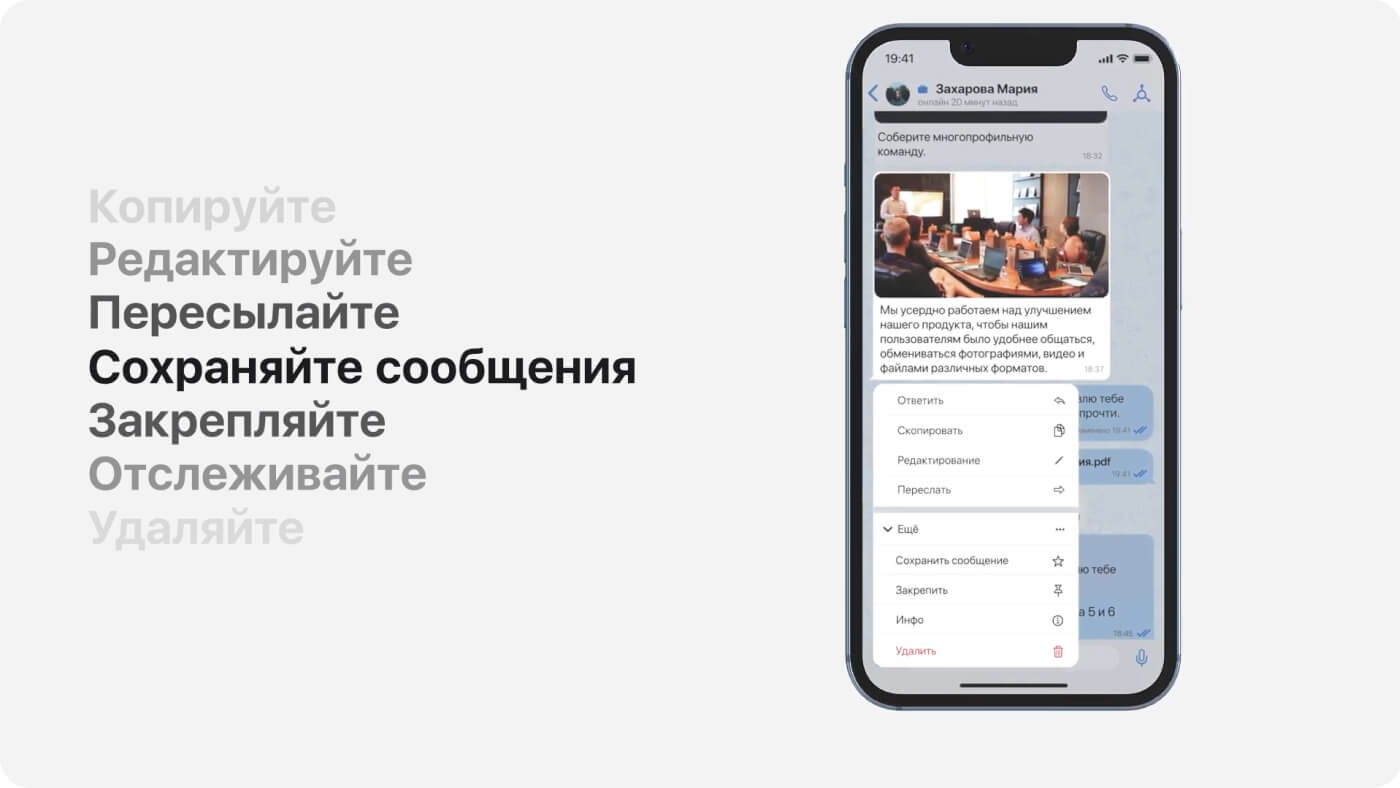In the 1980s, a psychologist named Edward de Bono argued that standard brainstorming yields many solutions, but they are often biased. Because our decisions are influenced by experience, habits, emotions, education, and environment. To "go beyond the box," de Bono proposed the technique of parallel thinking. The idea is to look at a situation from different angles, switching between six types of thinking.
In this article, we will tell you in more detail what principles this method is based on, how and in what situations to use it.
What is the Six Thinking Hats Method
The Six Thinking Hats Method appeared in response to one of the key problems of teamwork - the conflict of different points of view in the decision-making process. The author of this method, Edward de Bono, noted that our brain is not adapted to parallel thought processes, because we try to feel, analyze, criticize and invent at the same time. This reduces the effectiveness of thinking and does not always give objective results.
The main idea of the method is to separate types of thinking from each other, so as not to mix emotions, facts, criticism and creativity into one stream. This approach allows you to look at the problem from all sides, not to argue with each other, but to consistently consider each point of view. This is especially useful in a team: instead of a conflict of opinions - a structured analysis and the opportunity for everyone to speak out.
The essence of the method is in the alternate "switching" of thinking. The team puts on conditional "hats" - each of them symbolizes a certain style of thinking:
- White hat - facts, data, analytics.
- Red hat - feelings, intuition, first impression.
- Black hat - risks, weaknesses, criticism.
- Yellow hat - advantages, opportunities, benefits.
- Green hat - creativity, non-standard ideas.
- Blue hat - process management, goal setting, results.
This approach simplifies communication, structures the discussion and allows the team to quickly move from analysis to action. The method is universal: it is used in business, education, strategic sessions, calls in various teams and even in everyday decisions.
White hat: facts and information
In this hat, the participant discards all his emotions and evaluates only dry facts. The task is to collect data, figures, statistics on the topic.
Examples of questions that a moderator can ask a white hat participant:
- What facts do we have at the moment?
- What numbers confirm or refute our assumptions?
- What do the studies, metrics, user behavior say?
- What are the real limitations: technical, resource, time?
The white hat does not accept emotions and speculation. The moderator must strictly control this so that the results of the discussion are more objective.
Red hat: feelings and intuition
A participant in the red hat, on the contrary, must tell the team about his emotions associated with the new idea. Here we need any speculation, feelings and emotions without explanations and logic.
For example:
- It seems to me that this is risky
- I would like to implement this idea, but I am afraid of the financial costs
- It seems to me that this can increase the loyalty of our clients
- The project seems promising, but intuition tells us that we underestimate the complexity of implementation with clients.
The moderator must ensure that the participant in the red hat does not start making excuses for his feelings. It is important not to judge, but simply accept the emotions of the other person, discarding their current role and status in the company.
Black hat: risks and concerns
The black hat is our inner skeptic. The task of this participant is to honestly name weaknesses and risks. This is the case when you can be a little toxic.
For example:
- What if we don't manage to launch the project on time and it becomes irrelevant?
- How can clients react to process changes?
- Are we sure we have enough resources to do this?
- We haven't yet taken into account the legal aspects of data storage - this may delay the start of the project.
An important point: know the line between denying an idea and constructive criticism. Other team members should also help the colleague in the black hat - accept all the risks that he names and not try to argue.
Yellow hat: pros and benefits
The yellow hat is sunny, it adds motivation to the team and highlights all the strengths of the idea. Here you need to look for benefits, advantages and opportunities.
For example:
- This project will save time and labor costs
- This is a new product that we have long wanted to surprise users with
- This will allow us to stand out from the competition
- We will be able to scale up to other audiences in the future
- This is a great opportunity to strengthen the expertise within the team and grow professionally.
However, you should not ignore the negative aspects "for the sake of optimism" or take everything too positively, as if the project has already produced results.
Green Hat: Creativity
The green hat is an explosion of creative energy. It is customary to generate the boldest ideas here.
For example:
- What if we launch a pilot project to see demand?
- Let's give the first users not a discount, but a free month to use our solution?
- Let's try to develop a visual product designer so that customers can assemble the product for themselves, choosing the processes they want to automate?
- Why not launch a marketing case dedicated to how we ourselves use this product?
The participant in the green hat should be careful and not go too far in fantasy.
Blue Hat: Process Control
The blue hat is responsible for organizing the entire game. The participant in the blue hat sets the rules: when to start, who should wear which hat, and when the hats will change. This is the facilitator of the discussion - the leader who asks all the questions and controls the discussion process.
For example: "It's time to switch to the red hat" or "What did we come to under the yellow hat?"
In order not to lose the thread of the discussion, you need a clear plan and time regulations for the entire discussion. The participant in the blue hat is usually the team leader.
Advantages of the Six Hats Technique
Edward de Bono's Six Thinking Hats method is a cognitive tool aimed at streamlining thinking, optimizing group communication, and improving the quality of management decisions.
Psychological foundations
Reducing cognitive overload: the method allows you to consciously unload your working memory by focusing your thinking on only one aspect at a time (emotions, facts, criticism, etc.).
Integrating different thinking styles: people tend to use certain cognitive styles (e.g. rational, intuitive, critical). The hats method works with all types of thinking, reducing the risks of one approach dominating at the expense of others.
Reducing interpersonal conflicts: a safe space for exchanging opinions is created, which helps to find new solutions that are usually omitted during traditional discussions due to fear of condemnation.
Managerial and team advantages
Facilitation of discussions. The method can be easily used in scrum meetings, retrospectives, design thinking, strategic sessions, where it is important to structure the team discussion.
Making informed decisions. By step-by-step analyzing different aspects of an idea, the team moves from impulsive decisions to conscious choices that take into account risks, emotions, opportunities and alternatives.
Stimulating creativity. Green hat thinking helps generate ideas without criticism, but at the same time, black and white hats bring the team back to reality and testing hypotheses.
Synchronization of team thinking. All team members try on each color of the hat, which means everyone is in the same position. It doesn’t matter who you are - a manager, a developer or a marketer - at the moment of the “black hat” hats" everyone is looking for risks, and at the moment of "yellow" - only advantages. This relieves the pressure of roles, reduces conflicts and allows the team to work as a single whole.
Formats and scenarios of meetings using the colored hats method
Let's consider the main ways of applying the de Bono technique with specific formats and recommendations for organization.

Face-to-face meetings
Offline discussions can be organized with the help of colored cards or use real hats for better visualization of roles.
Example:
- Six hats - six stages. Each stage lasts 5-10 minutes.
- Moderator (leader) ingoes to the session, records ideas on the board, in a notebook or in a document on the computer.
- Hats are distributed among the participants, if necessary, you can repeat the circle several times, changing hats.
Online meetings
In distributed teams or in online learning, you can use video conferencing platforms, virtual whiteboards and spreadsheets with the ability to edit together. When holding remote meetings, it is better to turn on the camera to see the emotions and behavior of the participants. It also helps to increase concentration.
Example:
- Assign a facilitator (blue hat) who will lead the session, track timing, ask leading questions to participants and summarize.
- Use random numbers to determine who gets which color hat.
- Instead of hats and cards, you can use virtual conference backgrounds here. The background color represents the color of the hat.
- Allow up to 10 minutes for each hat, then move on to the next hat.
- When the circle is over, you can swap hats and continue.
- If there are fewer than 6 participants, some participants can play two or three roles - for example, under the white and green hats.
The hat technique can be adapted to various scenarios, here are a few of them:
Individual game
- Preparing to make a personal decision (1 person participates).
- Preparing to defend an idea to management.
- Preparing for an interview.
Making team decisions
- Need to choose between several options for strategy, features, contractors, etc.
- Complex cross-functional tasks, where there are many points of view.
- There are emotional or status conflicts.
- Retro at the end of a project or sprint.
- Analysis of failures and successes.
- Sessions to improve team dynamics.
Training
- Team trainings.
- Development of critical thinking in employees.
- Training of executives and managers.
- Lessons in schools, universities.
How to overcome resistance in teams
Sometimes new methods make people skeptical. This reaction is normal. People are often wary of new approaches. The main thing is not to argue, but to show the benefits in practice.
What to do?
- Start small.Have a short session on the six hats method to show the team how this approach works.
- Take a simple task as an example. For example: “Should we stop holding daily calls in the marketing team?”
- Use the tools the team is used to. If you are holding a meeting online, you can do it in a familiar messenger or video conferencing service.
- Don’t be afraid to add a little play. Colored icons, emojis, and visualizations don’t get in the way — on the contrary, they make the process easier and engage everyone. If colleagues are reluctant to join video conferences, try doing it in a chat using emoji, polls, voice messages.
As soon as people feel that the method really helps, the resistance will disappear.
An example of discussing an idea using the six hats method
Let's imagine that we work in an IT company, the management has instructed us to work out an idea for switching to a new digital platform for company-wide communications. We have prepared a template that you can download and use for your tasks.
The Six Thinking Hats method shows how structured discussion helps teams find solutions faster and without pressure. It does not require complex preparation or specific knowledge, but it has a tangible effect - especially where opinions differ or it is difficult to move forward. By implementing this approach even in short working sessions, you will see how the dynamics change: participants become more engaged and ideas become more diverse.
You can organize team trainings, meetings, lessons, developing the creativity of participants. Thanks to digital tools, the six hats method can be easily integrated into remoteformat, making it a versatile and easy way to maintain effective interactions regardless of the location of the participants.
Try it, and perhaps this method will become one of your favorite working tools.





